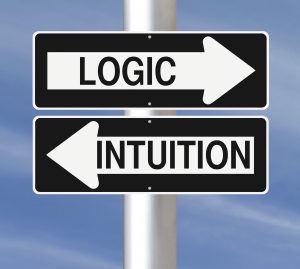This article is excerpted from text I wrote in Dramatica Story Structure Software. It describes one of key story structure choices you need to make if your Main Character is to ring true at a fundamental level. Here’s the excerpt:

Every Main Character should have a Problem-Solving Style. Whether your Main Character is a horse, a house, a person, or an alien, the audience will not be able to empathize with it unless that character possesses a Linear or Holistic mind. If you want your Main Character to tend to look for linear solutions to his problems, choose Linear Problem-Solving Style. If you want your Main Character to tend to look for holistic solutions to his problems, choose holistic problem-solving style.
THEORY: Much of what we are as individuals is learned behavior. Yet, the basic operating system of the mind is cast biologically before birth as being more sensitive to space or time. We all have a sense of how things are arranged (space) and how things are going (time), but which one filters our thinking determines our Problem-Solving Style as being Linear or Holistic respectively.
Linear Problem-Solving Style describes spatial thinkers who tend to use linear problem solving as their method of choice. They set a specific Goal, determine the steps necessary to achieve that Goal, then embark on the effort to accomplish those steps.
Holistic Problem-Solving Style describes temporal thinkers who tend to use holistic problem solving as their method of choice. They get a sense of the way they want things to be, determine how things need to be balanced to bring about those changes, then make adjustments to create that balance.
To be sure, we can go a long way toward counter-balancing those sensitivities, yet underneath all our experience and training, the tendency to see things more in terms of space or time still remains. In dealing with the psychology of Main Characters, it is essential to understand the foundation upon which their experience rests.
USAGE: How can we illustrate the Problem-Solving Style of our Main Character? The following point by point comparison provides some clues:
Holistic Problem-Solving Style: looks at motivations
Linear Problem-Solving Style: looks at purposes
Holistic Problem-Solving Style: tries to see connections
Linear Problem-Solving Style: tries to gather evidence
Holistic Problem-Solving Style: sets up conditions
Linear Problem-Solving Style: sets up requirements
Holistic Problem-Solving Style: determines the leverage points that can restore balance
Linear Problem-Solving Style: breaks a job into steps
Holistic Problem-Solving Style: seeks fulfillment
Linear Problem-Solving Style: seeks satisfaction
Holistic Problem-Solving Style: concentrates on “Why” and “When”
Linear Problem-Solving Style: concentrates on “How” and “What”
Holistic Problem-Solving Style: puts the issues in context
Linear Problem-Solving Style: argues the issues
Holistic Problem-Solving Style: tries to hold it all together
Linear Problem-Solving Style: tries to pull it all together
Historically, more often than not, males characters are given a Linear problem solving approach. Female characters are given a holistic problem solving style. This matches traditional cultural expectations. But, culture continues to evolve and these days, more and more often, gender and Problem-Solving Style are cross-matched compared to historical norms to create more interesting characters that reflect today’s expectations.
For example, Ripley in Alien and Clarice Starling in The Silence of the Lambs are Linear Problem-Solving Style characters. Tom Wingo in The Prince of Tides and Jack Ryan in The Hunt for Red October are Holistic Problem-Solving Style characters. In most episodes of The X Files, Scully (the female F.B.I. agent) uses a Linear Problem-Solving Style and Mulder (the male F.B.I. agent) uses a Holistic Problem-Solving Style, which was part of the series’ unusual feel for its time.
Note that Problem-Solving Style has nothing to do with a character’s sexual preferences or tendency toward being masculine or feminine.


